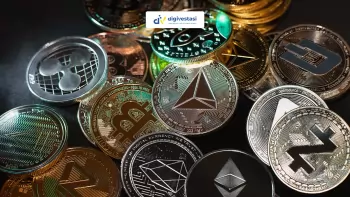
Crypto News
Could Be a Surprise! This Altcoin May Skyrocket If October 2025 ETF Gets Approved!
/index.php
Saham News - Posted on 26 September 2025 Reading time 5 minutes

Investors often focus only on big bank stocks (KBMI IV), even though there are also promising second-line banks in the KBMI III category with compelling growth stories and attractive upside potential.
KBMI, short for Bank Group Based on Core Capital, is a classification system introduced by Indonesia’s Financial Services Authority (OJK) to categorize banks according to their core capital. It replaced the previous BUKU system to better align regulatory oversight with the size, complexity, and risk profile of each bank.
A bank qualifies as KBMI 3 if its core capital meets a certain threshold — a key measure of financial strength that allows it to absorb losses and expand operations.
KBMI 1: Core capital ≤ Rp 6 trillion
KBMI 2: > Rp 6 trillion – Rp 14 trillion
KBMI 3: > Rp 14 trillion – Rp 70 trillion
KBMI 4: > Rp 70 trillion
Extensive branch networks nationwide, serving millions of retail and corporate clients.
Crucial pillars of national financial stability, typically managing assets above Rp 100 trillion.
Diverse product offerings: savings, current accounts, deposits, corporate and SME loans, mortgages, wealth management, and advanced digital banking.
Some operate internationally or maintain overseas representative offices.
Most are publicly listed, with transparent financial reports.
The banking sector is gradually recovering, as reflected in industry-wide loan growth of 7.56% in August 2025, up from 7.03% in July — the first uptick this year after months of decline.
We expect credit expansion to continue, aligned with Bank Indonesia’s target of 8%–11% growth for 2025.
This will be supported by looser liquidity, especially after the government injected Rp 200 trillion from excess budget funds into state-owned banks (Himbara). Even non-Himbara banks will indirectly benefit from increased liquidity circulation and credit demand.
Fiercer competition in lending is expected, with stronger, more efficient banks gaining an edge. Moreover, five interest rate cuts since early 2025 are likely to lower the Cost of Funds (CoF) and reduce provisioning for bad loans.
As a result, bank profits are expected to improve in H2 2025, while maintaining asset quality through prudent risk management.
We identify five KBMI III banks worth watching:
Bank Tabungan Negara (BBTN) – Key player in the government’s 3 million housing program, with Rp 25 trillion liquidity injection to support mortgage lending.
Bank Syariah Indonesia (BRIS) – Received Rp 10 trillion injection to boost credit growth, focusing on hajj financing. A planned spin-off from Bank Mandiri could increase independence and profit retention (~Rp 3.6 trillion).
CIMB Niaga (BNGA) – Known as a dividend stock, with a projected dividend yield of 7.45%–9.43%, far above the 4.2% industry median.
Bank Permata (BNLI) – Benefited from Bangkok Bank’s acquisition, gaining liquidity and technology support. LDR rose from 78.2% to 85.6% YoY.
OCBC NISP (NISP) – Dubbed “The Next BBCA Killer” thanks to strong fundamentals: Rp 2.6 trillion profit (+7% YoY), LDR 76%, and low NPL (1.9%).
Based on Price-to-Book Value (PBV):
BBTN is the most undervalued, followed by BRIS near fair value.
BNGA, BNLI, and NISP are currently overvalued, trading above their 5-year standard deviation.
Nevertheless, as long as the trend remains bullish, these stocks can still present trading opportunities through trend-following or swing strategies. Investors, however, should carefully manage asset allocation and risk profiles to optimize returns while preparing for potential price corrections.
Source: cnbcindonesia.com
What do you think about this topic? Tell us what you think. Don't forget to follow Digivestasi's Instagram, TikTok, Youtube accounts to keep you updated with the latest information about economics, finance, digital technology and digital asset investment.
DISCLAIMER
All information contained on our website is summarized from reliable sources and published in good faith and for the purpose of providing general information only. Any action taken by readers on information from this site is their own responsibility.